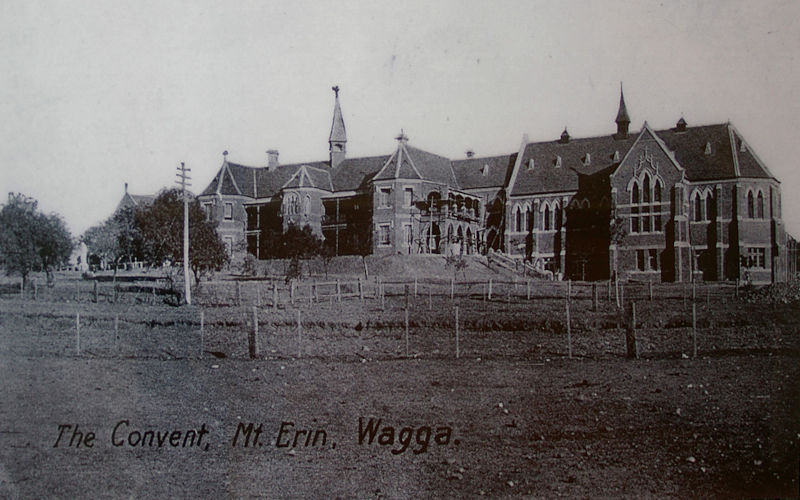Blast from our sectarian past
April 15, 2023
Recently a writer for the Sydney Morning Herald claimed to have solved the mystery of why Sr Liguori fled her convent in Wagga Wagga one frosty evening in July 1920. In its day the Liguori affair was one of the most sensational episodes in Australias sectarian history. As the Herald writer notes, It seems every newspaper in Australia was fascinated with the story.
In the Heralds print edition of 3 April 2023, the article carries the salacious headline: Pregnant to a priest, nun on run defied church over child. The trouble with titillation is that it rarely satisfies. And in this case, like the Rolling Stones, I got no satisfaction. On the other hand, those with an axe to grind against the Catholic Church were probably ecstatic.
As someone who for more than 25 years has researched and written about the story of Sr Liguori (aka Bridget Partridge) I was not aware there was a mystery to be solved. At the time Ms Partridge publicly explained in letters and in evidence in court the reasons she fled her convent:
She had been demoted from a teaching role to that of a servant. She was overworked, her health was suffering, and she resented the way she was being treated. She felt she had lost her vocation but was too frightened to request a dispensation from her vows.
According to the Herald, the real reason is that Liguori had been made pregnant by a priest and had fled due to threats to her life after she refused to relinquish the child to the church for adoption.
The source for this revisionist claim is Gordon Sanson who, the article reveals, was born in 1935, 15 years after Sr Liguori fled the convent. According to the Herald, Sanson had grown up with the Sr Liguori story. Perhaps, it was in that context he learned the story of Sr Liguoris alleged pregnancy, for nothing else in the article indicates the source of his claimed knowledge.
The article records that Sanson was told that after fleeing the convent Partridge found refuge at Adelong with his great-grandparents, that their property was surrounded when the Catholic Church learned of her presence there, and she was smuggled out in disguise and boarded a train to Sydney.
The story told to Sanson did not happen. According to evidence given in court when Partridge later sued her bishop for wrongful arrest, the house that was surrounded and from which she escaped in disguise was the Thompson house in Wagga Wagga. From there she went to Adelong where she stayed with the Howell family not Sansons great-grandparents. Undetected by those looking for her, Partridge stayed in Adelong a few days before moving on to Sydney.
Sanson told the Herald he met Partridge in 1955, but the article does not suggest she told him about the pregnancy: Sister Liguori wanted to see me, and so I returned that Sunday to meet her and her son. She hugged me so tight with great excitement. The article makes no claim he actually met the son or that Partridge told him she had a son.
Nowhere else in the extensive public record of the Liguori affair is there mention of her having a child, let alone one fathered by a priest. Not even during the bitter sectarian controversy the affair generated in 1920-21 did any of the anti-Catholic press make that claim. Nor does it appear in more recent writings by people who knew Partridge personally at the same time as Sanson is said to have met her.
As an historian, I am always interested in new facts or new interpretations that cast old stories in a new light. But mere gossip is not sufficient to sustain revisionist history. Anyone familiar with the Liguori story would have immediately realised that Sanson was not a reliable source on which to base the reopening of one of the most bitter sectarian controversies of the twentieth century.
Yet, it is not only the lack of evidence that makes the Heralds publication of this article troubling. Although the article deals with events that occurred a century ago, it is published at a time when Catholics have been shamed and embarrassed by the public exposure of the misconduct of their priests and bishops over the sexual abuse scandal.
The media has done the community a service by exposing the Catholic Churchs misconduct and the church certainly deserves severe criticism for that misconduct. But the allegations in the article against an unnamed priest and the church are made without any basis in fact.
As a result, the article unjustifiably reinforces negative opinions of the Catholic Church, adding unnecessarily to the feelings of shame and embarrassment felt by Catholics as well as reawakening in the victims of clerical abuse the hurt and anger they feel when the subject of that abuse is canvassed in the media.
The Heralds headline is of a type that might well have appeared in the anti-Catholic press a century ago. Thankfully the bitter sectarianism of those days has subsided. This is what makes the article and its sensational headline so insidious. It is a throwback to a time when anti-Catholic bigotry was commonplace in the press a time which is best left in the past.

